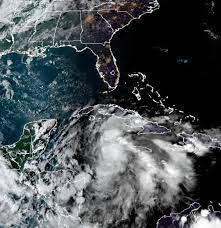
Landfall occurred in the Big Bend region of Florida near Perry, on 26th September 2024, the hurricane as a Category 4 storm. Till 27th September the storms had seriously degraded while unprecedented destruction was in their wake as they crossed over into Georgia and then Tennessee. More than 20 deaths have been reported across the ravaged states that establishes the severity of this disaster.
Timeline of Events
Helene hit Florida late Thursday night, around 11:10 p.m. EDT, with winds over 130 mph. The tropical storm moved in fast enough over land to pound coastal cities. Flooding overwhelmed main streets in towns such as Tarpon Springs, where a lengthy roster of responses by emergency services was needed.
It lost power and was further downgraded to Friday morning to a tropical storm. At 10:30 a.m. EDT, Hurricane Helene’s center was estimated to be about 100 miles east of Chattanooga, Tennessee, with 45 mph of sustained winds. This storm though at a lesser category was major in the eyes of many through flash floods and a risk of tornadoes for southeastern United States.
Severity and Effect
According to the National Hurricane Center, the storm could unleash 6 to 12 inches of rain in parts of the central and southern Appalachians. Isolated areas could see as much as 20 inches. Flash flood emergencies had declined in Atlanta, as well as parts of South Carolina and North Carolina, as lives and property were at a grave level of threat, with involuntary evacuations necessary in Asheville and McDowell counties, North Carolina.
Deaths caused by Hurricane Helene: It is tragedy in number. The confirmed deaths are seven from Florida and at least 11 from Georgia, aside from two in North Carolina. Deaths by drowning are caused by the height of flooding while trying to move in the dangerous waters or catching people unguarded with the water rising.
Precautions and Response
Local authorities had already begun activating their emergency plans from the very start when the system was crossing its area. The warning was issued on which all those who live in coastal areas were told to leave their homes before the landing of this hurricane. As Helene drew itself into the interior of Kentucky and Indiana, all the schools in that region closed. Such hurricanes, however, never let the destructive capacity that Hurricane Helene has witnessed and, in turn, keeps one’s eyes riveted on preparation and timely evacuation be ignored.
Within hours, areas initiated emergency response. Relief workers were always at standby 24/7 for immediate response. Relief centers were set up for the evacuees while food and relief goods started mobilizing from local groups for the stranded storm victims.
Momentum Moving Ahead
Helene will slow down by Friday, thus spreading the flood risk to all the areas. The public has been called to be on their toes and in preparation since the warnings are likely to reach them through local authorities of places that the storm path is set to hit. The situation has drawn attention to the emergency services, which have geared themselves up and ready to take immediate action about the additional threats likely to arise.
In short, impacts from Hurricane Helene are thought to be deep in scars: destruction is the only word that summarizes this event. Preparedness, however, in cases of such disasters, poses critical issues pertaining to recovery after hurricanes. When steps for recovery come into play, communities will require help so that they rebuild themselves from this calamitous event. It is a wake-up call that comes rough as it gallops across the people in stern tones of how, really, power lies with nature and those on and off stage would have to adhere strictly to the safety protocols in case of an emergency.




